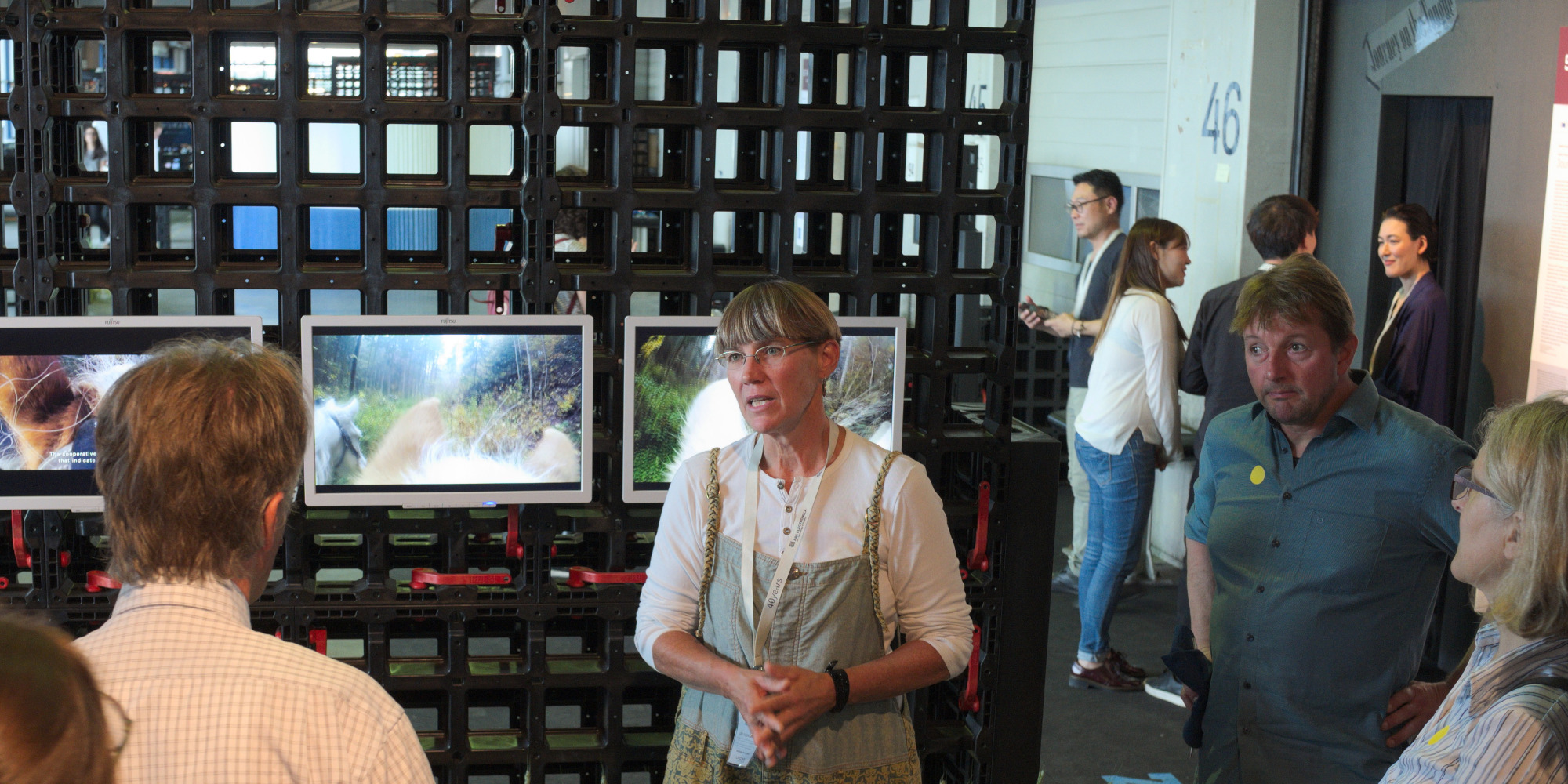With SLAP I want to make robotics not only understandable but truly approachable. Clifford Nass drew the comparison of robots with domesticated animals. They are useful, but also dangerous. But, how do we communicate with animals? Can we feel them? How does it work?
Luckily, I have three ponies which are happy to serve as guinea pigs. I have rampaged with them as a small tribe through the woods for years. So some communication must occur. They are as creatures alien to us, but also familiar. And they can develop a lot of kinetic energy. Neuroscience has a concept for interaction called Mind Reading. It works with living beings: while watching, we replay them in our own minds, whereby a mood emerges in us, serving us to predict their next actions. The perception-prediction-action feedback loop works mutually, a never-ending process.
Now I try that in a novel way with my ponies. As a first step, I applied a camera between the ears of one of the ponies. The result was interesting to watch, but something essential was missing. The mutuality was missing—the resulting impressions remained alien to me.
I had to take another step and equip all three ponies with a camera. I always tried to stay out of the camera and by accident was caught now and then until I finally understood that this was the missing piece. With four cameras, three ponies, one human: The mutual cycle of perception-prediction and action was made visible.
If you interact with ponies, you cannot plan deeper interaction, or reproducible activities. But, you can give chance a chance, provoke a bit—and something will happen. Wandering around—the aforementioned rampage—works perfectly. As an example, I attached a video clip compiled from a bike trip with my ponies featuring them walking through a gate. Look at the white ear and how it follows me while standing perfectly still. (http://seelikeapony.blogspot.com/2017/05/eine-radtour-mit-dem-e-fatbike1.html) I learned how feedback loops were working, and it proved very helpful for the engineers and designers of robotic interaction. I also learned a lot about myself in relationship to these ponies—I am way too agitated, they are cool. For the self-driving cars, we created the so-called ‘Cooperative Car,’ which has inherited some attitudes from my cool ponies.
For me there is also a touch of magic happening while watching the videos and the movement of the ears, to see the fur so close and nature passing by through their ears. I hope I can share this magic moment with every viewer.
Project Credits:
- Video: Marcus Werner
Website:
Biography:
Sabine Engelhardt (DE) studied librarianship in Mannheim and Stuttgart. She studied Communication Science and Philosophy in Berlin, focused on mnemonics as a computer supported knowledge management technique for her masters, and joined the research department at Daimler with Alexander Mankowsky. She has been with Daimler Research since then, working in diverse areas like Knowledge Management and on the Female Perspective on mobility. She developed the perfume device for the current Mercedes-Benz cars and loves this aspect of creating new perfumes in her job. *SLAP* represents an exciting new endeavor.


